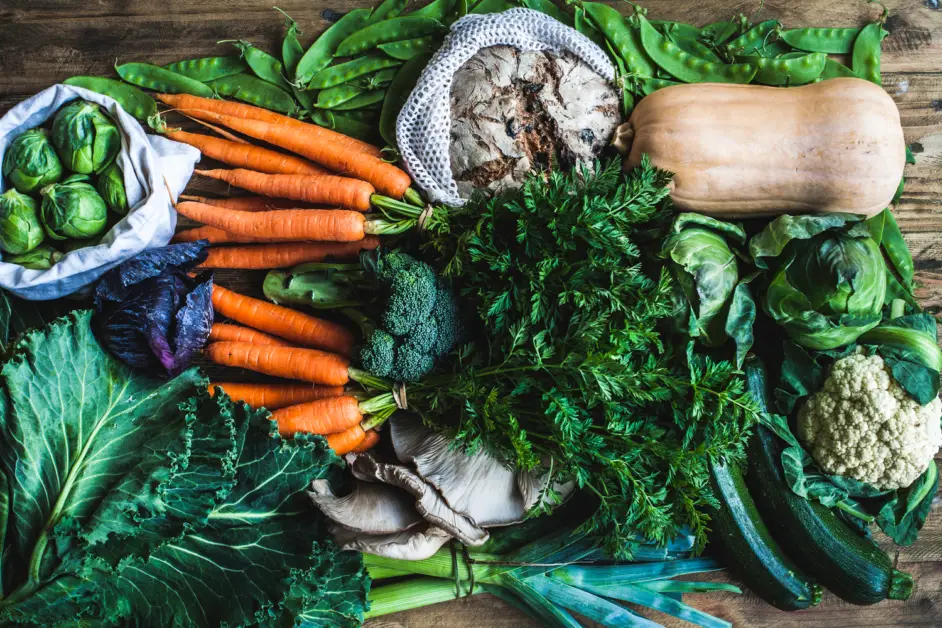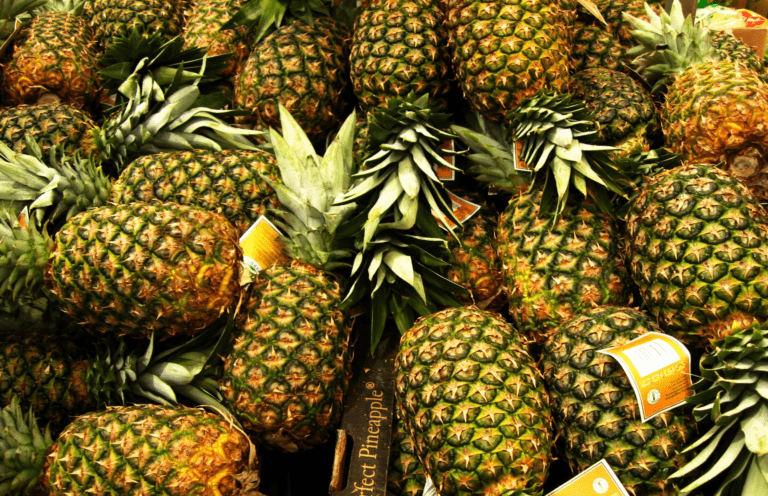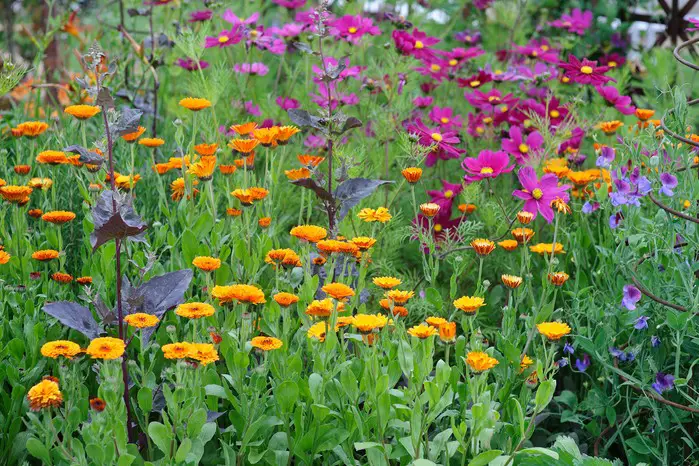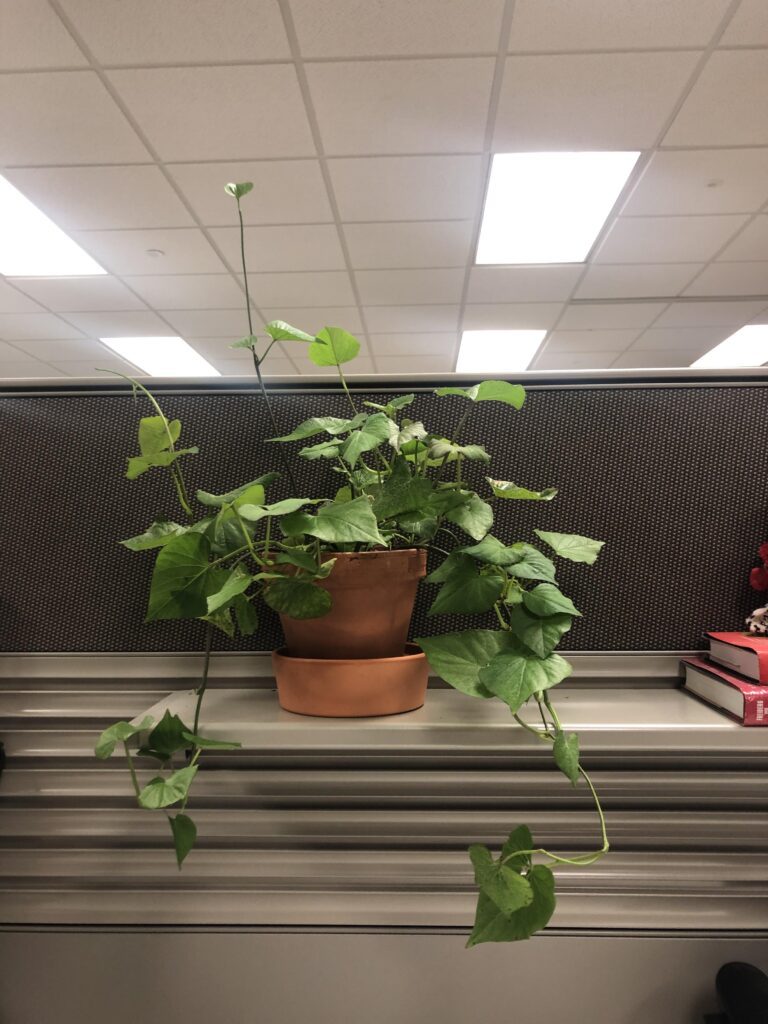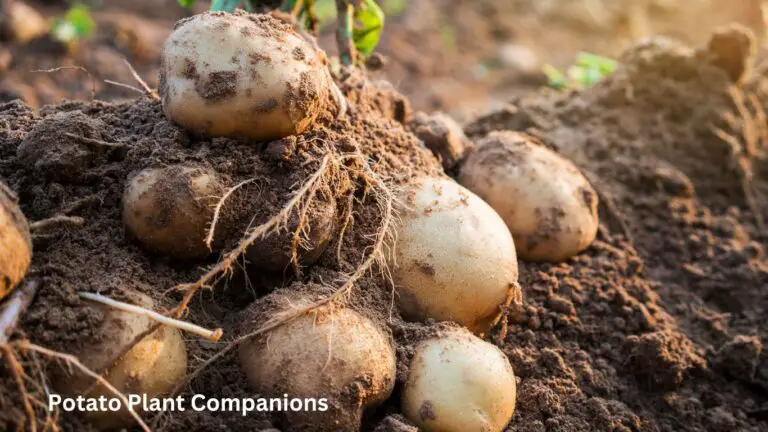Growing Produce: A Guide to Growing Fruits and Vegetables in Your Garden
Did you know that home gardening can increase your property value by as much as 11%? Whether you’re a seasoned green thumb or a newbie, growing your own fruits and vegetables is more rewarding than ever. In our comprehensive guide, “Growing Produce: A Guide to Growing Fruits and Vegetables in Your Garden,” you’ll discover the latest techniques to maximize your harvest and maintain a thriving garden. From soil preparation to pest control, we cover everything you need to know to turn your garden into a bountiful oasis. Ready to transform your backyard into a fresh produce paradise? Let’s dig in and grow something amazing together.
Table of Contents
Preparing Your Garden Soil
SOIL is the foundation of a successful garden. Properly preparing your garden soil is essential for healthy plant growth and abundant yields. Before you start planting, it’s important to evaluate the condition of your soil and make any necessary amendments.
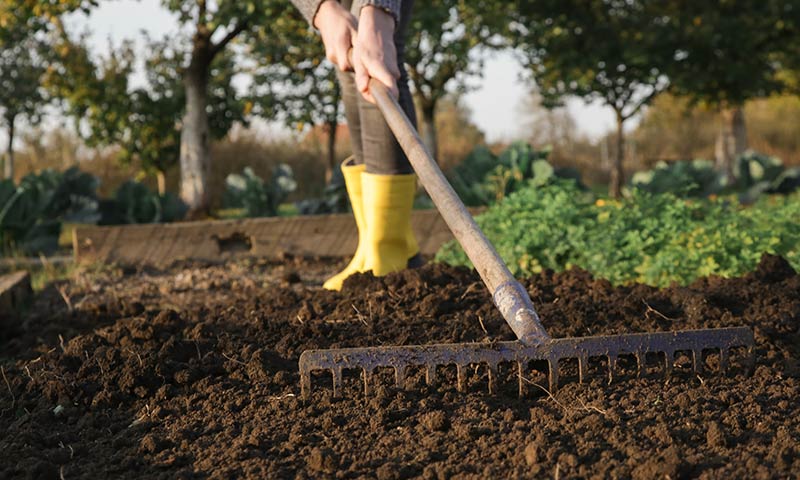
Understand Soil Texture:
- Sandy soils: Loose and quick-draining.
- Clay Soils: Heavier with higher moisture retention.
- Loam Soils: Ideal balance of sand, silt, and clay.
Improve Soil Texture:
- Incorporate Organic Matter: Use compost or well-rotted manure.
- Benefits: Loosens compacted soil, improves drainage in clay soils, and increases water-holding capacity in sandy soils.
- Optimal pH Range: Slightly acidic to neutral (6.0-7.0) for most vegetables.
- Adjusting pH:
- Raise pH: Add lime.
- Lower pH: Add sulfur.
- Regular Testing: Ensure soil remains within desired pH range and identify nutrient deficiencies.
Weed Control:
- Pre-Planting: Clear area of weeds to prevent competition for water, nutrients, and sunlight.
- Ongoing Management: Use organic mulch or install weed fabric to suppress weed growth throughout the season.
Remember, a little extra effort in preparing your garden soil will go a long way in providing a healthy environment for your plants to thrive. By ensuring proper soil texture, pH levels, and weed control, you’re setting the stage for a successful growing season. Stay tuned for the next steps in creating the garden of your dreams!
Choosing the Right Fruits and Vegetables for Your Garden
When it comes to choosing the right fruits and vegetables for your garden, there are several factors to consider.
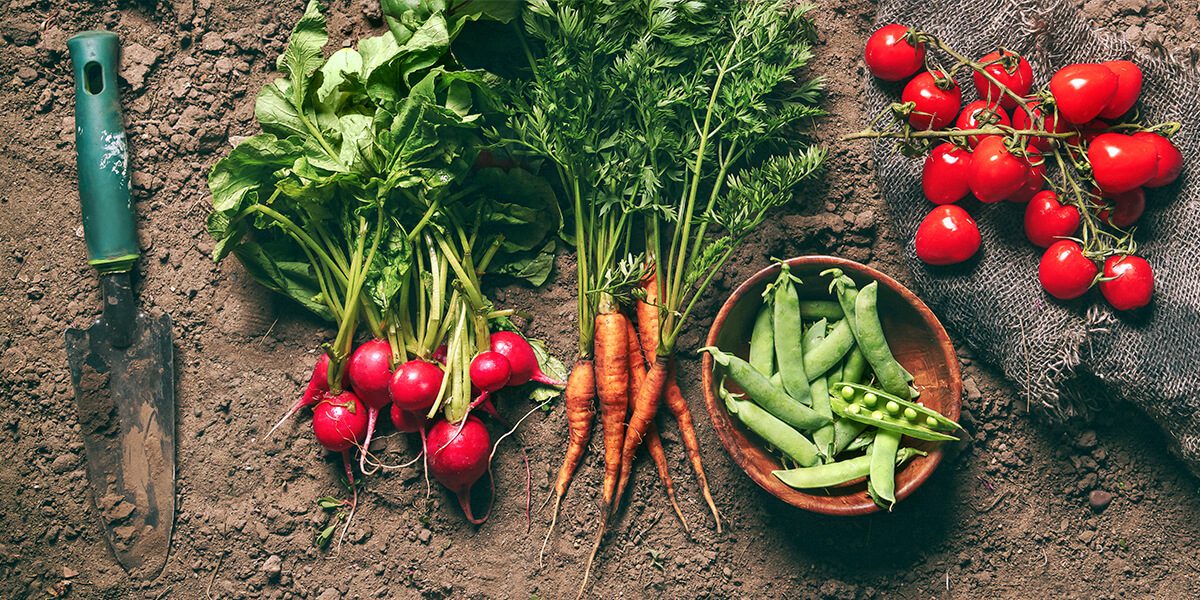
- Climate and Weather Conditions:
- Understand the climate in your region. Some fruits and vegetables thrive in specific conditions. For example, tomatoes love warm weather, while kale prefers cooler temperatures.
- Research which crops are well-suited to your area. Consider factors like frost dates, growing seasons, and average temperatures.
- Space Availability:
- Assess the space you have. Larger plants like pumpkins or watermelons need more room, while herbs and lettuce can grow in smaller spaces or containers.
- Utilize vertical gardening or raised beds to maximize space efficiency.
- Personal Preferences and Dietary Needs:
- Grow what you love to eat! Consider your family’s preferences. If you enjoy fresh salads, focus on lettuce, spinach, and other greens.
- Think about nutritional needs. For example, leafy greens are rich in vitamins, while berries provide antioxidants.
- Soil and Nutrient Requirements:
- Different crops have specific soil needs. Test your soil pH and amend it if necessary.
- Learn about fertilization requirements. Some plants need more nitrogen, while others prefer phosphorus or potassium.
Overall, selecting the right fruits and vegetables for your garden requires careful consideration of climate, space, personal preferences, and specific crop requirements. By making informed choices, you can create a thriving garden that not only satisfies your taste buds but also provides a sense of accomplishment and satisfaction.
Selecting High-Quality Seeds or Seedlings
When it comes to gardening, selecting high-quality seeds or seedlings is crucial for the success of your plants. Starting with superior genetic material will ensure that your garden thrives and produces the best possible yield. But how do you identify the right seeds or seedlings? Here are a few key factors to consider.
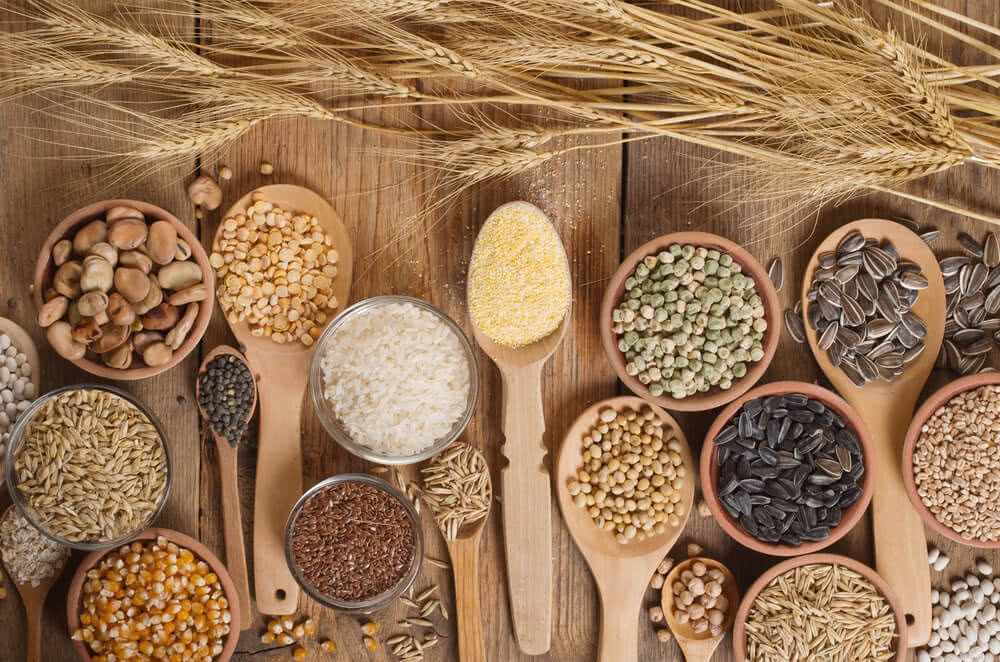
Choose Reputable Suppliers:
- Opt for Quality: Purchase from trusted suppliers or nurseries with good reputations.
- Certification and Endorsements: Look for suppliers certified by agricultural organizations or with positive customer feedback.
Consider Plant Traits:
- Disease Resistance: Select varieties known for their resilience to diseases.
- Space Requirements: Choose compact or dwarf varieties if you have limited space.
- Climate Suitability: Ensure the seeds or seedlings are suited for your local climate and growing conditions.
Examine Seed and Seedling Quality:
- For Seeds: Look for plump, vibrant, and undamaged seeds.
- For Seedlings: Choose those with healthy leaves, strong stems, and well-developed roots. Avoid weak or diseased plants.
By taking the time to carefully select high-quality seeds or seedlings, you are setting yourself up for gardening success. Your plants will have a better chance of thriving and producing an abundant harvest. So keep these factors in mind and choose wisely for a fruitful growing season.
Planting and Spacing Your Crops
When it comes to planting and spacing your crops, there are several factors to consider in order to optimize growth and yield. The first step is to determine the appropriate spacing between plants. This will vary depending on the specific crop, its growth habit, and the available space in your garden.
- Plant Spacing:
- Avoid overcrowding: Give each plant enough room to grow without competing for resources.
- Research specific recommendations: Consult gardening resources or seed catalogs for ideal spacing based on plant varieties.
- Proper Planting Techniques:
- Soil preparation: Ensure loose, well-drained, and nutrient-rich soil.
- Planting depth: Follow species-specific guidelines for planting depth.
- Soil-to-root contact: Firmly press soil around the plant to eliminate air pockets.
- Thorough watering: Help establish roots by watering newly planted crops adequately.
Remember, thoughtful planting practices contribute to healthy growth and a productive garden! 🌱🌼🌿
Providing Adequate Water and Irrigation
When it comes to gardening, providing adequate water and irrigation is crucial for the health and growth of your plants. Water is essential for plants to carry out various physiological processes, such as nutrient absorption, photosynthesis, and transpiration. Without a proper water supply, plants can wilt, become nutrient deficient, and even die.
- Understand Water Needs:
- Different plants have varying water requirements. Consider their growth stage, weather conditions, and soil type.
- Leafy vegetables (like lettuce and spinach) need more frequent watering, while root vegetables (such as carrots and potatoes) can tolerate drier conditions.
- Choose the Right Irrigation Method:
- Drip irrigation: Provides water directly to the plant roots, minimizing evaporation and reducing weed growth.
- Sprinklers: Suitable for larger areas but may waste water due to overspray.
- Soaker hoses: Deliver water along the soil surface, promoting deep root growth.
- Advantages and Disadvantages:
- Drip irrigation conserves water and prevents foliage wetting, reducing disease risk.
- Sprinklers cover large areas quickly but may lead to uneven water distribution.
- Soaker hosesare efficient but require proper placement to ensure even coverage.
- Water Conservation Techniques:
- Apply mulch around plants to retain moisture and suppress weeds.
- Regularly monitor soil moisture levels to avoid overwatering or underwatering.
By providing adequate water and implementing effective irrigation techniques, you can ensure that your garden thrives and yields healthy and abundant crops. So, take the time to understand your plants’ water needs and choose the appropriate irrigation method to set your garden up for success.
As an avid gardener, I recently purchased the Sun Joe Indestructible Oscillating Sprinkler to efficiently water my garden. The setup was straightforward, and I appreciated the sturdy construction upon unboxing. Its oscillating action provided even coverage across my lawn and flower beds, ensuring that every inch received adequate moisture. The range adjustment feature allowed me to customize the watering area according to my garden’s layout, which was incredibly convenient. Additionally, the sprinkler’s durability was evident as it easily withstood accidental bumps and falls without any damage, making it a reliable addition to my gardening arsenal.
However, one drawback I encountered was the limited adjustability of the spray pattern. While it offered sufficient coverage for most areas, I found it challenging to fine-tune the spray direction for certain corners of my garden. Additionally, the water pressure seemed somewhat inconsistent at times, resulting in uneven watering in specific areas. Despite these minor issues, the Sun Joe sprinkler proved to be a valuable tool for maintaining my garden’s health, especially during the hot summer months. Overall, I would recommend it to fellow gardeners seeking a durable and efficient sprinkler solution.
- Durability: Sun Joe SJI-OMS16 Indestructible Oscillating Sprinkler is built to last with sturdy construction, ensuring long-term reliability.
- Adjustable Coverage: It features an adjustable range and width, allowing customization to suit different garden sizes and shapes.
- Even Water Distribution: The oscillating action provides even water distribution, preventing overwatering in certain areas and ensuring uniform hydration for all plants.
- Easy Setup: Users appreciate its simple setup process, requiring minimal assembly and effort to start watering their gardens effectively.
- Versatility: This sprinkler can be used for various watering needs, from lawns to flower beds, making it a versatile option for gardeners.
- Plastic Components: Some users have reported that certain plastic components may not be as durable as expected, potentially leading to issues with longevity.
- Water Pressure Dependency: While the sprinkler is designed to work with standard water pressure, it may not perform optimally in areas with low water pressure, affecting its coverage and effectiveness.
- Limited Reach: Depending on the water pressure and settings, the coverage area may be limited compared to other sprinkler models, requiring users to adjust placement or use multiple units for larger gardens.
- Oscillation Noise: A few users have mentioned that the oscillating mechanism can produce some noise during operation, which may be noticeable depending on the proximity to the sprinkler and individual preferences.
- Price: While it offers durability and functionality, some may find the initial cost of the Sun Joe SJI-OMS16 Indestructible Oscillating Sprinkler slightly higher compared to other options on the market.
Implementing Effective Weed Control Methods
Effective weed control is crucial for maintaining the health and productivity of your garden. Weeds compete with your crops for nutrients, sunlight, and water, leading to reduced yields and potentially even crop failure. To ensure successful weed management, it is important to employ a combination of preventive and control measures.
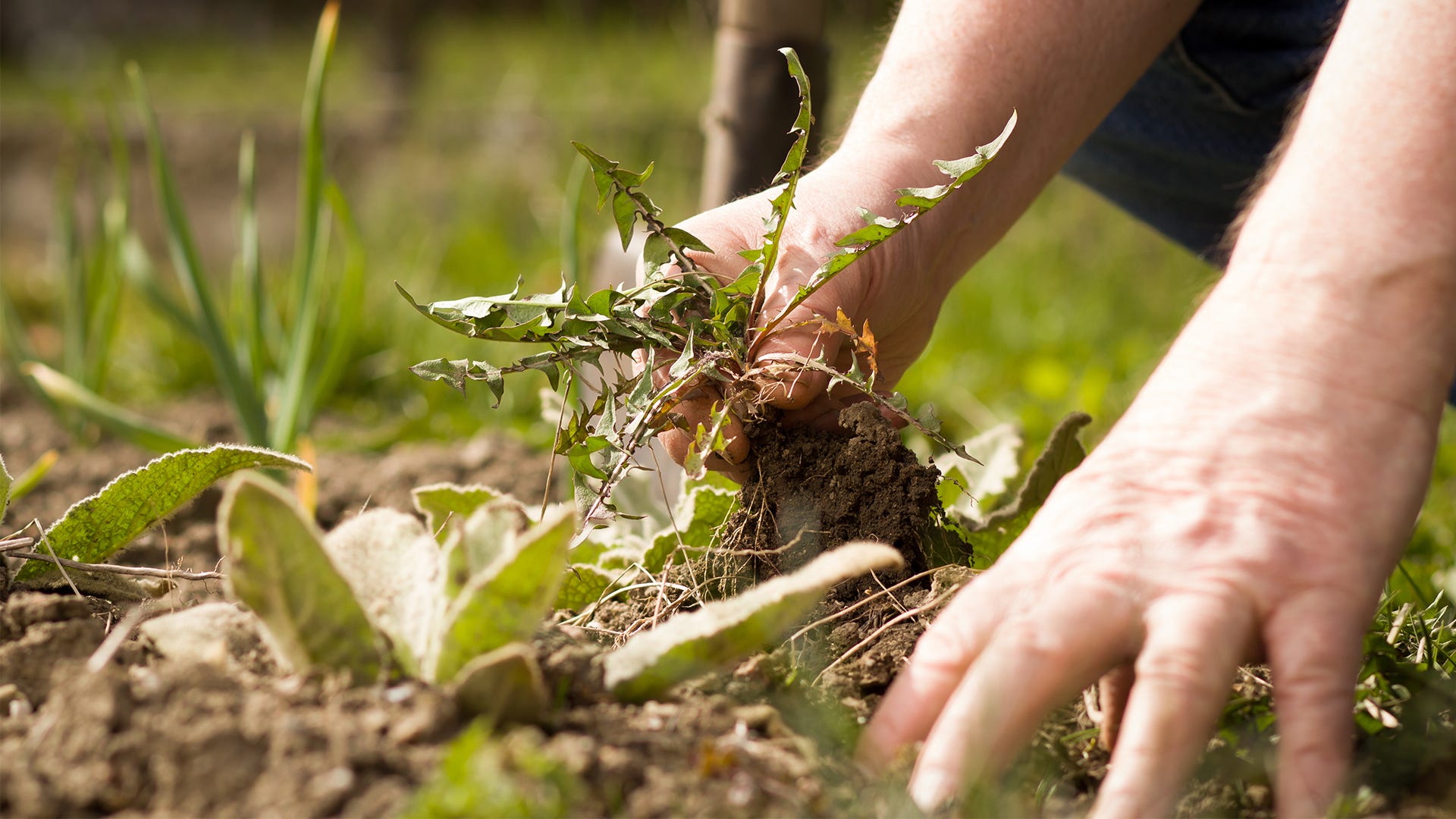
- Mulching:
- Benefits: Blocks sunlight, prevents weed seed germination.
- Organic Mulch: Use straw, wood chips, or compost to suppress weeds, improve soil fertility, and retain moisture.
- Inorganic Mulch: Use plastic or landscape fabric for areas with aggressive weed growth.
- Cultivation and Hand-Weeding:
- Regular Cultivation: Use a hoe or hand tiller to disturb weed seedlings.
- Hand-Weeding: Remove weeds by hand or with a weeding tool.
- Mechanical Cultivation: For larger areas, use tools like a rotary tiller or tractor-mounted cultivator.
- Caution: Avoid damaging crop roots while cultivating.
- Consistent Monitoring:
- Regular Checks: Monitor your garden frequently.
- Prompt Action: Address weed growth immediately to minimize the need for intensive control methods.
Regular monitoring of your garden and prompt action against weed growth will help keep your plants healthy and minimize the need for more intensive weed control methods.
The Grampa’s Weeder proved to be a game-changer in my gardening routine. Its simple yet effective design made weeding tasks incredibly easy and efficient. With its long handle and deep-reaching jaws, I could effortlessly remove weeds from the root without bending or kneeling, saving me from back strain and discomfort. The durable construction ensured that it could tackle even stubborn weeds without any signs of wear or damage, making it a reliable tool for long-term use.
One of the standout features of the Grampa’s Weeder is its ability to remove weeds with minimal soil disturbance. This not only helped in preserving the surrounding plants but also prevented weed regrowth by ensuring that the weed roots were completely removed from the soil. Additionally, its lightweight design made it easy to maneuver around tight spaces and hard-to-reach areas, allowing me to effectively weed all areas of my garden with ease. Overall, the Grampa’s Weeder exceeded my expectations and significantly streamlined my weeding process, making it an essential tool in my gardening arsenal.
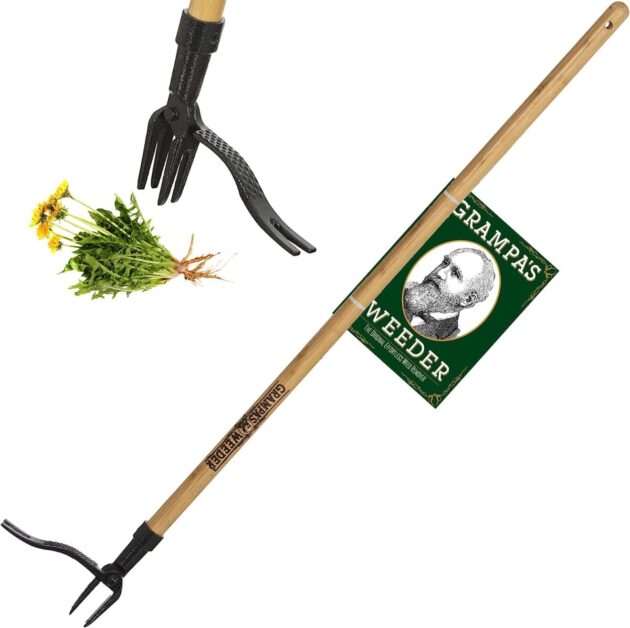
✅ Durable Construction: It is constructed from durable materials, ensuring longevity and reliability in outdoor gardening tasks.
✅ Easy to Use: The ergonomic design and long handle make it easy to grip and maneuver, reducing strain on the user’s back and joints.
✅ Versatility: This weeding tool can be used in various outdoor spaces, including gardens, lawns, and flower beds.
✅ Environmentally Friendly: Grampa’s Weeder eliminates the need for chemical weed killers, making it an environmentally friendly option for weed removal.
❌ Soil Types: Some users have reported difficulty using Grampa’s Weeder in hard or compacted soil, where the weed’s roots may be more firmly entrenched.
❌ Price: Compared to other weeding tools, Grampa’s Weeder may be considered relatively expensive by some customers.
❌ Storage: The long handle may pose challenges for storage in smaller spaces or garden sheds.
❌ Learning Curve: There may be a learning curve for new users to effectively use the tool and ensure proper weed removal without damaging surrounding plants.
Protecting Your Plants from Pests and Diseases
One of the biggest challenges that gardeners face is protecting their plants from pests and diseases. These unwanted guests can wreak havoc on your precious fruits, vegetables, and flowers, causing stunted growth, aesthetic damage, and even death. However, with the right strategies and precautions, you can effectively safeguard your plants and ensure a healthy and thriving garden.
| Key Practices for Plant Protection | Description |
|---|---|
| Healthy Soil Management | – Ensure well-draining soil enriched with compost for plant health. |
| – Prevent waterlogging by maintaining proper soil drainage. | |
| Crop Rotation | – Break disease and pest cycles by practicing regular crop rotation. |
| – Adjust planting locations to balance nutrient depletion. | |
| Companion Planting | – Plant companion crops that naturally repel specific pests. |
| – Promote biodiversity to create a balanced ecosystem in the garden. | |
| Proper Spacing | – Allow sufficient spacing for air circulation and reduced humidity. |
| – Prevent overcrowding to deter pests and diseases. | |
| Regular Inspection | – Monitor plants regularly for early signs of pests or diseases. |
| – Take prompt action upon detection to prevent further spread. | |
| Natural Predators | – Encourage beneficial insects as natural predators in the garden. |
| – Minimize the use of broad-spectrum pesticides to protect them. | |
| Proper Watering | – Water at the base of plants to minimize foliage moisture. |
| – Water in the morning to allow plants to dry during the day. |
Providing Proper Nutrients and Fertilizers
Proper nutrition is essential for the healthy growth and development of plants in your garden. By providing the right nutrients and fertilizers, you can maximize the productivity and yield of your crops.
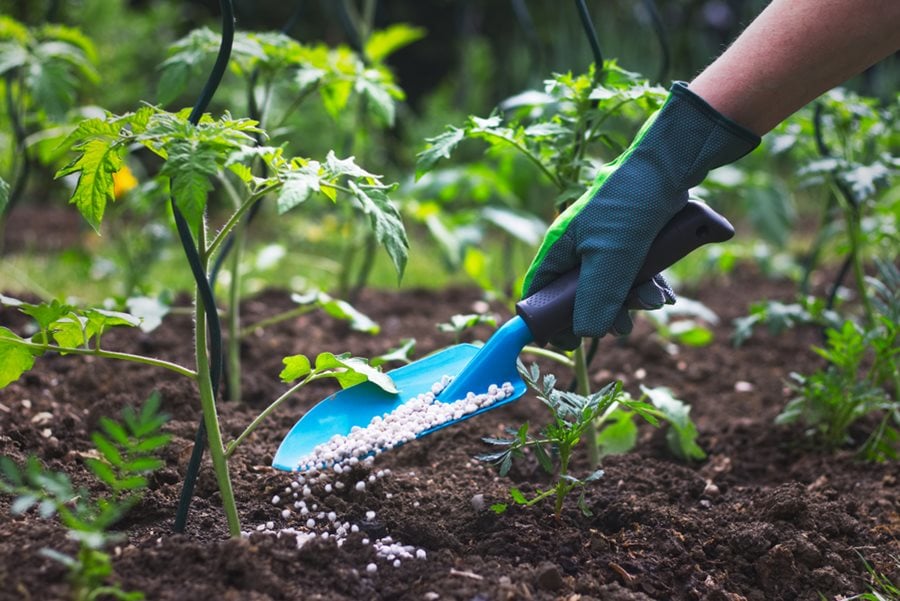
- Nitrogen (N):
- Promotes leafy green growth.
- Essential for protein synthesis.
- Found in organic sources like compost and synthetic fertilizers.
- Apply based on plant needs and growth stage.
- Phosphorus (P):
- Crucial for root development, flowering, and fruit production.
- Supports energy transfer (ATP) and DNA synthesis.
- Organic sources include bone meal and rock phosphate.
- Adjust application based on soil test results.
- Potassium (K):
- Enhances overall plant health and disease resistance.
- Regulates metabolic processes like water balance.
- Found in wood ash, kelp meal, and synthetic fertilizers.
- Apply as needed, considering plant type and growth phase.
- Soil Testing:
- Conduct soil tests to assess nutrient levels.
- Identify deficiencies and adjust fertilizer application accordingly.
- Organic Fertilizers:
- Use compost or manure for nutrients.
- Improve soil structure and fertility.
- Synthetic Fertilizers:
- Provide quick nutrient boost.
- Use judiciously to prevent over-fertilization.
Remember that different plants have different nutrient requirements, so it is crucial to select appropriate fertilizers based on their specific needs. The application rates and timing of fertilizers may also vary depending on the plant species and the stage of growth. By providing proper nutrients and fertilizers, you can help your plants thrive and achieve optimal growth and productivity in your garden.
Pruning and Training Your Plants for Optimal Growth
Properly pruning and training your plants is essential for their optimal growth and overall health. By selectively removing certain branches or stems, you can promote better air circulation and light penetration, which can lead to improved yield and fruit quality. Additionally, training your plants to grow in a specific form or direction can help manage their size, prevent overcrowding, and maximize space utilization in your garden.
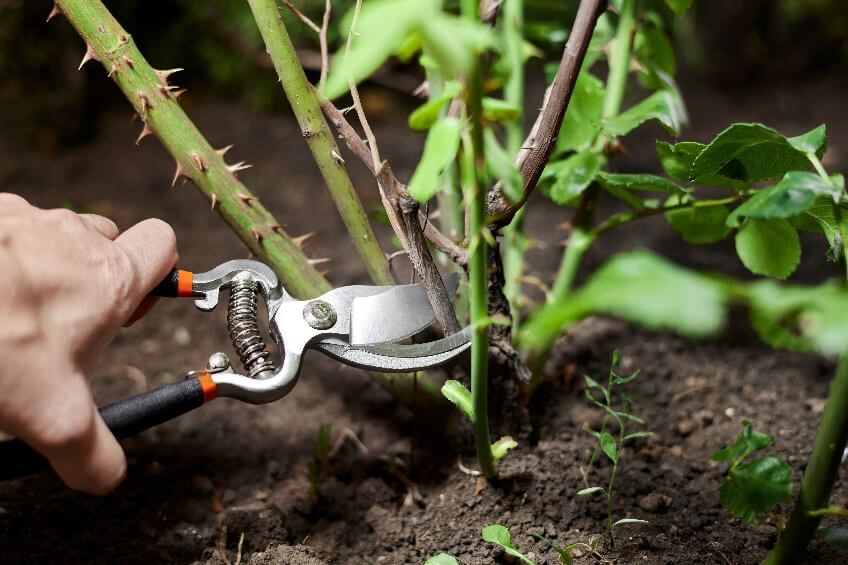
Pruning:
- Understand Plant Needs: Know the specific pruning requirements for each plant variety.
- Vegetables:
- Tomatoes and Peppers: Regularly prune to remove lower, non-productive branches and promote upward growth.
- Fruit Trees:
- Apples and Pears: Annual pruning to maintain a balanced framework, encourage fruiting on younger wood, and prevent disease or pest infestations.
Training:
- Guiding Growth: Use techniques like staking, trellising, or cages to direct plant growth.
- Organized Garden Space: Helps create a more organized and manageable garden layout.
- Support for Heavy Plants: Prevents breaking or bending of heavy fruiting plants.
- Improved Light Exposure: Enhances light exposure for better photosynthesis, leading to healthier and more vigorous growth.
In conclusion, pruning and training your plants not only contributes to their optimum growth but also plays a crucial role in maintaining a healthy and productive garden. With careful consideration of each plant’s needs and employing appropriate techniques, you can enjoy bountiful harvests and beautiful, thriving plants in your garden. Stay tuned for more expert tips on gardening techniques to make your green thumb flourish.
Monitoring and Maintaining Soil pH Levels
Soil pH level is an important aspect to monitor and maintain in your garden to ensure optimal plant growth and productivity. pH is a measure of the acidity or alkalinity of the soil, and it can greatly influence the availability of essential nutrients to your plants. Most plants prefer a slightly acidic to neutral soil pH ranging from 6.0 to 7.0. However, there are exceptions, such as acid-loving plants like blueberries, which require a lower pH level.
- Soil pH Testing Methods:
- Soil pH Testing Kits: These kits are readily available and easy to use. You can purchase them online or at garden centers. They typically include test strips or a color-changing solution that you mix with soil samples. Follow the instructions to determine the pH level.
- pH Meters: These digital devices provide accurate pH readings. Insert the probe into the soil and follow the manufacturer’s guidelines. pH meters are more precise but may require calibration.
- Chemical Test Kits: These kits use chemical indicators to assess soil pH. They are suitable for more detailed analysis and are commonly used in laboratories.
- Collecting Soil Samples:
- Take samples from different areas of your garden or planting beds. Mix them together to get a representative sample.
- Remove stones and debris from the soil sample.
- For a basic test, moisten the soil and use a soil pH testing kit or strips. Follow the instructions to determine the pH level.
- Interpreting Results:
- Most plants thrive in a soil pH range of 6.0 to 7.5. Adjustments may be needed if your soil falls outside this range.
- Acidic soil (pH below 7.0) can be corrected by adding lime (calcium carbonate) to raise the pH.
- Alkaline soil (pH above 7.0) can be adjusted by adding organic matter (such as compost) or elemental sulfur to lower the pH.
- Application Rates:
- Follow recommended application rates based on soil test results. Over-application can harm plants.
- Lime application rates depend on soil type and desired pH level. Consult local guidelines or extension offices for specific recommendations.
- Plant-Specific pH Preferences:
- Research the pH preferences of the plants you intend to grow. Some plants thrive in acidic soil, while others prefer alkaline conditions.
Regularly monitoring and maintaining the soil pH levels in your garden will provide your plants with the optimal growing conditions they need. By understanding the pH requirements of the plants you are growing and making necessary adjustments, you can ensure a healthy and thriving garden.
Harvesting and Storing Your Produce
As a gardener, one of the most rewarding moments is when you can finally harvest your produce. A bountiful harvest not only brings satisfaction but also showcases the success of your gardening efforts.
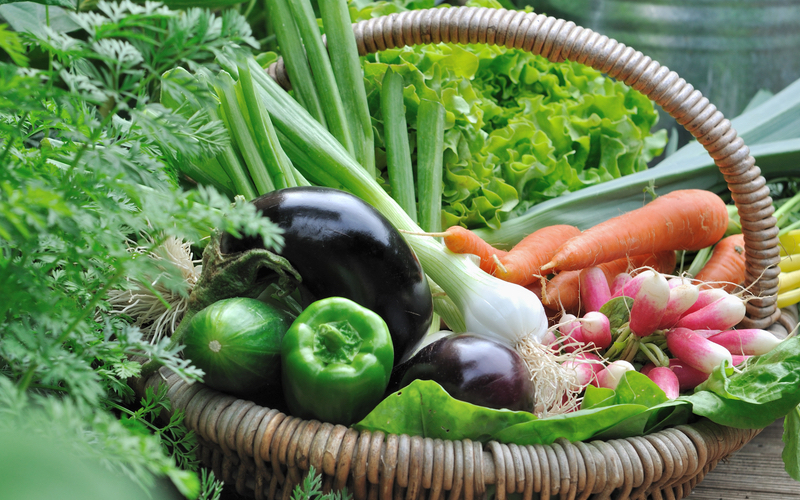
- Harvesting:
- Each fruit and vegetable has an optimal harvesting time.
- Consider factors like color, size, and firmness.
- Tomatoes: Harvest when fully ripened with uniform color.
- Leafy greens (lettuce, spinach): Harvest at desired size before bolting.
- Proper Storage:
- Handle harvested produce with care.
- Tomatoes and peppers: Store at room temperature.
- Leafy greens and root vegetables: Refrigerate to maintain freshness.
For longer-term storage, you may consider canning, freezing, or drying certain fruits and vegetables. These preservation methods can help you enjoy your harvest all year round, even when the gardening season comes to an end. By mastering the art of harvesting and storing your produce, you can savor the fruits of your labor long after they have been picked.
Extending Your Growing Season with Greenhouses or Cold Frames
To extend your growing season and maximize your yield, utilizing greenhouses or cold frames can be highly effective. These structures provide a controlled environment that protects your plants from extreme weather conditions and extends their growing period. Whether you are a seasoned gardener or a novice, incorporating these structures into your gardening practices can greatly enhance your success.
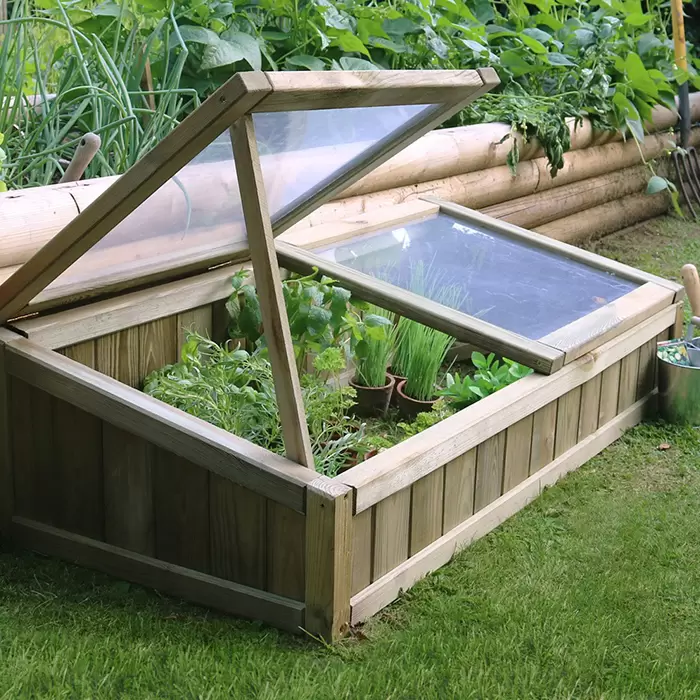
- Greenhouse:
- Enclosed structures that trap solar heat.
- Extend growing season beyond local climate limits.
- Regulate temperature, humidity, and ventilation.
- Ideal for delicate plants, herbs, and fruits.
- Cold Frames:
- Simple glazed boxes for temperature protection.
- Positioned close to the ground.
- Useful for seedlings, cool-season crops, and overwintering.
- Affordable alternative to full-sized greenhouses.
Both options enhance plant growth and yield by providing controlled environments. Choose based on your space and budget! In the next section, we will explore further techniques to ensure the long-term success of your garden, including sustainable practices that promote both environmental stewardship and productivity.🌱🏡🌞
Utilizing Sustainable Practices for Long-Term Success
Utilizing sustainable practices in your garden is not only beneficial for the environment but also for the long-term success of your crops. By implementing these practices, you can create a self-sustaining ecosystem that promotes healthy plant growth while minimizing the need for external inputs.
- Recycle Organic Waste: Create nutrient-rich soil amendments from kitchen scraps and garden waste.
- Benefits: Reduces waste, improves soil structure and fertility, and promotes healthier plants with higher yields.
- Alternative to Synthetic Fertilizers: Provides a natural source of nutrients for your garden.
Water Conservation:
- Efficient Irrigation Systems: Implement drip irrigation or rainwater harvesting to minimize water consumption and reduce runoff.
- Environmental and Economic Benefits: Conserves water, reduces environmental impact, and saves money.
- Select Native or Drought-Tolerant Plants: Choose plants adapted to local climate conditions, which require less water and reduce overall water demand.
Overall, by utilizing sustainable practices in your garden, you can create a more environmentally-friendly and resilient growing space. These practices not only contribute to the health of your plants but also protect the broader ecosystem. So, why not take a step towards sustainability and reap the rewards of a thriving and productive garden?
Watch video for more information:
FAQ
What are some common sustainable weed control methods?
Some common sustainable weed control methods include hand-pulling weeds, mulching with organic materials, using cover crops, and employing natural herbicides.
How can I protect my plants from pests and diseases in a sustainable way?
To protect your plants from pests and diseases in a sustainable way, you can encourage beneficial insects, use organic pest repellents like neem oil or insecticidal soaps, practice crop rotation, and maintain good plant hygiene.
What are some natural sources of nutrients and fertilizers for my garden?
Natural sources of nutrients and fertilizers for your garden include compost, animal manure, seaweed extract, bone meal, and organic fertilizers made from plant-based ingredients.
Can you provide some tips on pruning and training plants for optimal growth?
To prune and train plants for optimal growth, make sure to remove dead or damaged branches, thin out overcrowded areas, and support vine plants with trellises or stakes. Additionally, prune at the right time based on the specific plant’s growth habits.
How can I monitor and maintain soil pH levels in my garden?
You can monitor and maintain soil pH levels in your garden by regularly testing the soil with a pH testing kit, adding organic matter like compost to improve pH balance, and avoiding excessive use of acidic or alkaline fertilizers.
What are some effective methods for extending the growing season with greenhouses or cold frames?
Effective methods for extending the growing season with greenhouses or cold frames include insulating the structure properly, using thermal mass materials, providing adequate ventilation, and using row covers or frost blankets during colder periods.
Are there any specific fruits and vegetables that are particularly well-suited for sustainable gardening?
Yes, there are some fruits and vegetables that are particularly well-suited for sustainable gardening, such as tomatoes, peppers, leafy greens, root crops like carrots and radishes, and herbs like basil and oregano. These crops often have high yields and are relatively easy to grow using sustainable practices.
How can I store my harvested produce in a sustainable manner?
To store harvested produce in a sustainable manner, use eco-friendly storage containers like glass jars or reusable produce bags, store in a cool and dry place, and avoid excessive use of plastic or disposable packaging.
Can you provide some tips on choosing high-quality seeds or seedlings?
When choosing high-quality seeds or seedlings, look for reputable seed companies, select varieties that are adapted to your climate and growing conditions, check for any signs of disease or damage, and consider buying organic or heirloom varieties for sustainable gardening.
Is it necessary to provide additional water and irrigation for my garden?
Yes, providing adequate water and irrigation for your garden is necessary for the healthy growth of plants. However, it is essential to practice water conservation by using efficient irrigation methods like drip irrigation, watering in the morning or evening to reduce evaporation, and collecting rainwater whenever possible.

Studied Agricultural Engineering-Plant Protection at University of California, Davis.
Head of Content writing team at Southelmontehydroponics.com

